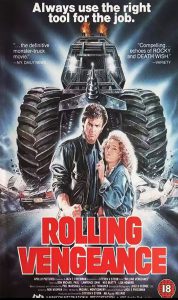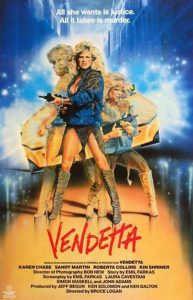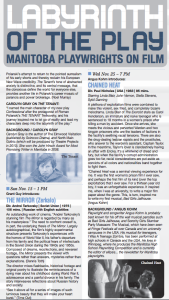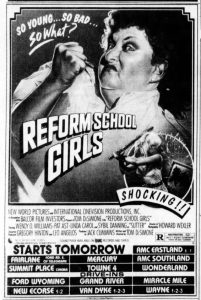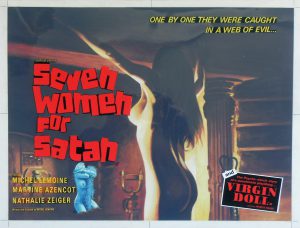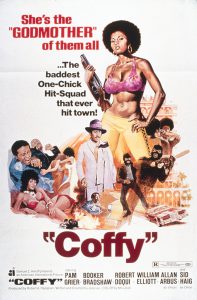 Coffy (1973) by #JackHill
Coffy (1973) by #JackHill
w/ #PamGrier #BookerBradshaw #RobertDoQui #AllanArbus #SidHaig
“She had a body men would die for – and a lot of them did!”
“Coffy’ll cream ya!”
Music by #RoyAyers
#Action #Blaxploitation #Crime
#NotQuiteClassicCinema
#FridayNightAtTheHomeDriveIn
What can one say about Coffy (1973) that hasn’t been said before? It’s the movie that launched Pam Grier to stardom. It inspired other filmmakers. It’s been ripped off and spoofed. Depending on your point of view, it could either be the greatest Pam Grier movie (and possibly the greatest female-led Blacksploitation movie ever made), or it could be the worst.
Yes, surprisingly enough, the movie is a bit divisive. I have friends who hated, hated, hated it. I also have friends who love it more than life itself. How can this be?
Coffy was, in fact, the first of the Big Four Pam Grier Blacksploitation Pictures that I ever saw. I talked about this a bit in my discussion of Sheba Baby (1975). Just to refresh your memory, the Big Four are:
Coffy, Foxy Brown (1974), Friday Foster (1975) and Sheba, Baby (1975). All four of the movies were named after the character that Grier played in the movie, and all four were available to rent in matching VHS boxes. I don’t think I realized that Coffy was the first one in the series. Somehow it just found its way into my hand on that day and I took it home.
As I said back then, I enjoyed Coffy, so I started renting (and buying) all of the other films (including other movies Pam Grier was in, like The Big Doll House (1971), Women in Cages (1972) etc).
In some ways, Coffy is the grittiest of all the Pam Grier movies. It feels ultra low budget, and it feels edgy and sleazy. Depending on your point of view, this is either a good thing, or a bad thing. I tend to lean more toward the “good thing” side of the argument. Coffy is raw, and it is nasty. The opening sequence of the film lays it all out for the viewer. We get some graphic sleaze, and then we get a really graphic shotgun blast to the head. And if you didn’t know what kind of movie you were watching before that moment, you surely do now.
This is a hard R revenge movie. No PG tastefulness here. And I guess this could be why some people find it distasteful. Others may simply be thrown by the very low budget feel of it.
Foxy Brown was apparently conceived of as a sequel to Coffy. They changed their minds at the last minute and made her a different character. But if you watch closely, you can tell she’s basically the same woman. There’s even a hospital scene. Coffy, as you may recall, is a nurse. Foxy Brown isn’t, but you can still almost see her being one. But I digress…
Jack Hill has claimed that the budget of Foxy Brown was the same as the budget for Coffy. I find this hard to believe, as Foxy Brown looks so much slicker. Just watch the credit sequence of each movie and ask your self which one looks more expensive.
The point is, Coffy really feels rawer than all of the other movies. It feels like a quick and dirty production. And I like ’em that way. Just tell me a good story. Don’t waste my time making it look pretty.
But speaking of looking pretty… as someone on twitter remarked to me, Pam Grier looks amazing in this movie. She really does. It’s easy to see why she became a movie star and a cultural icon. Of course, it’s more than her looks. It’s her no nonsense, in your face, badass attitude. You really believe that she is physically, and mentally, able to do the things that she does to get revenge. She easily earns her place in the vigilante action hero hall of fame.
The only thing that I don’t understand is how Pam Grier didn’t make more than four of these movies. Sure, she made a lot of other movies – and some of those are among her best. But whey weren’t there five sequels to Foxy Brown or Coffy? Or a least a few more, similar movies? I think we could have used them.
But, ultimately, I guess we have to simply be grateful for the movies we have. And Coffy is the one that got the ball rolling. And for that reason alone, it is a #NotQuiteClassicCinema classic. I’m not sure how many times I’ve watched it over the years, but I am confident when I say that I will certainly be watching it again, on some future #FridayNightAtTheHomeDriveIn.
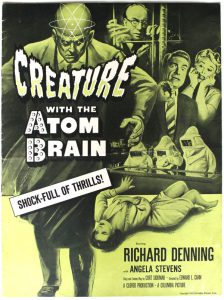 Creature With the Atom Brain (1955) by #EdwardLCahn
Creature With the Atom Brain (1955) by #EdwardLCahn
